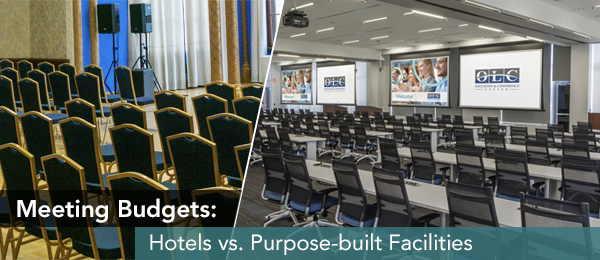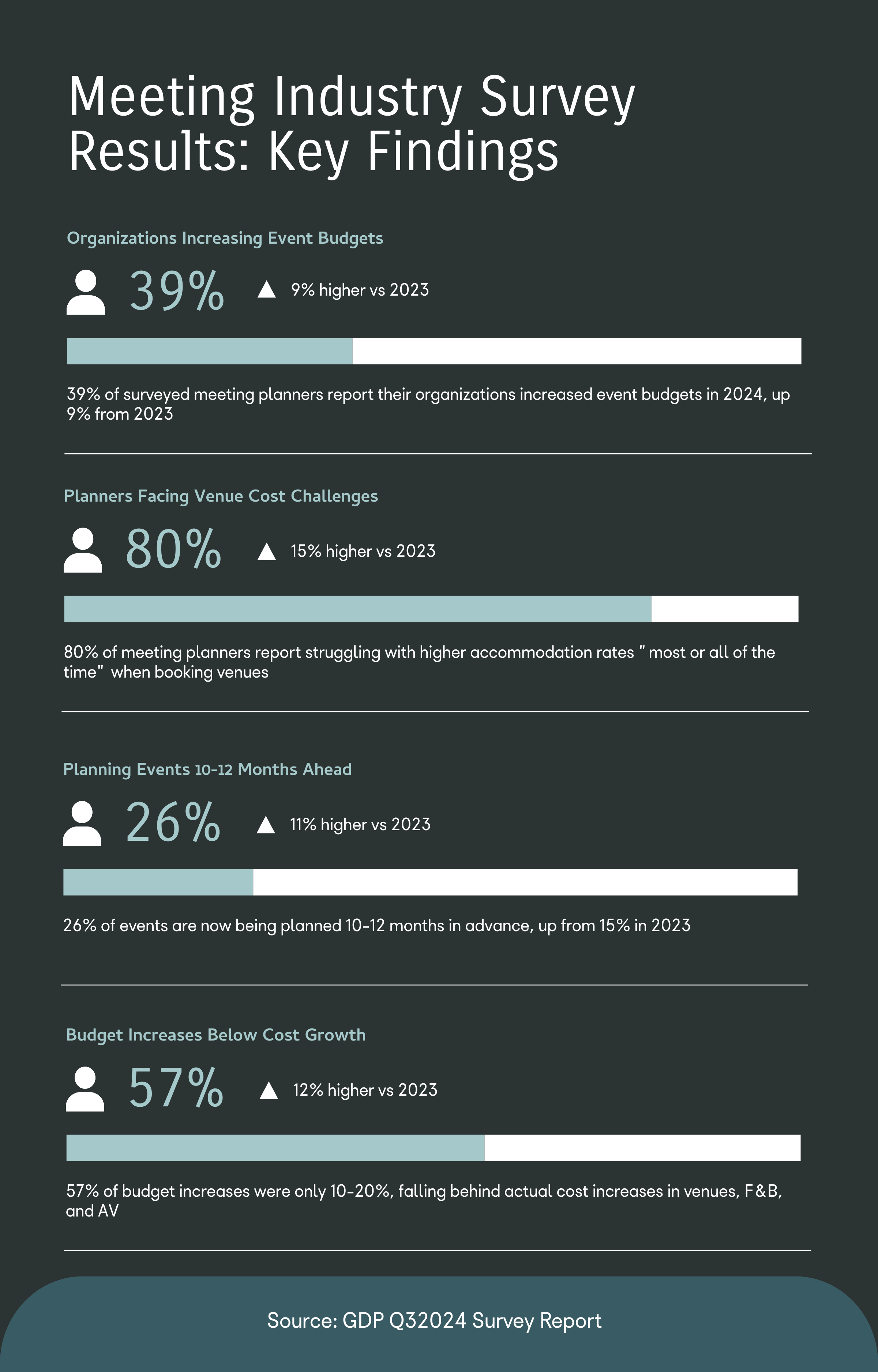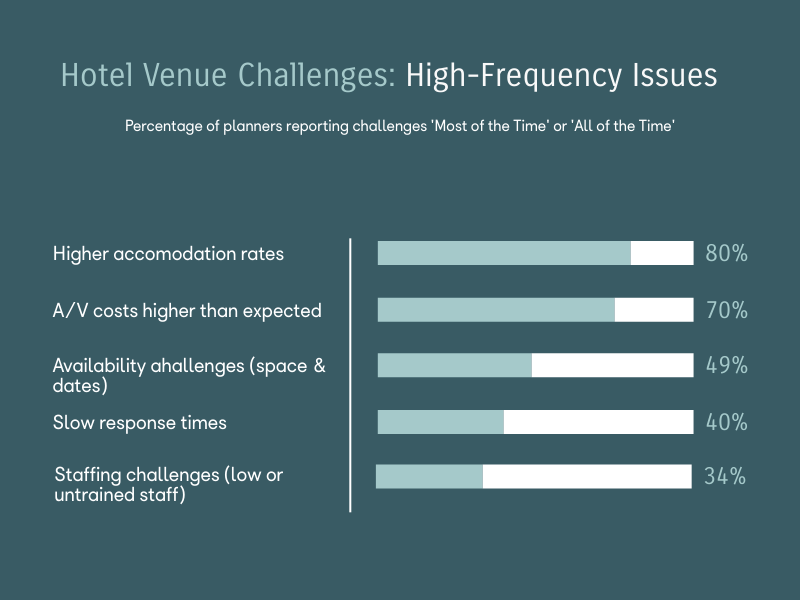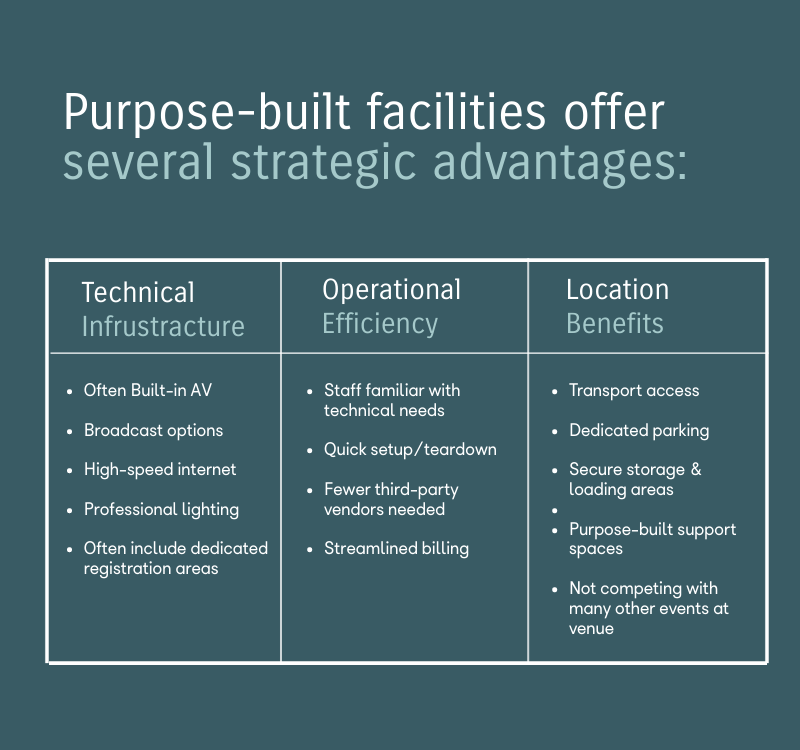
When Budget Increases Aren’t Enough: A New Solution for Meeting Planners
The spreadsheet tells a brutal truth: a 20% increase in the meeting budget still leaves less buying power than last year. In conference rooms nationwide, planners compare notes on their latest venue quotes, where basic AV packages now cost more than entire events did in 2019. This scene plays out daily as the meetings industry grapples with an uncomfortable new reality: traditional venue economics no longer make sense.
The Numbers Don’t Lie
Recent industry data paints a sobering picture. While 39% of meeting planners saw budget increases in 2024, a closer look reveals a troubling pattern: 57% of these increases fell between just 10-20%. For most planners, these modest gains barely offset inflationary pressures, leaving no room for program enhancements or innovation.
The geographic divide is even more stark. While 44% of U.S. and Canadian planners reported budget increases, only 27% of international planners saw similar gains. This disparity creates a two-tier system where some organizations must completely reimagine their meeting strategies.

The True Cost of Traditional Venues
The challenge goes beyond simple room rates. According to the GDP report, nearly 80% of planners now face challenges with accommodation rates “most or all of the time,” while over 70% struggle with unexpectedly high AV costs. A basic meeting setup now typically includes “add-ons” like:
- Base room rental
- Mandatory AV services and support staff
- Food and beverage minimums
- Setup and teardown fees
- Technical support charges
- Internet connectivity costs
- Furniture rental fees
- Basic supply charges (notepads, water service, etc.)
- Service charges and gratuities
- Municipal taxes and fees
Challenges of Working with Hotels
Hotels present significant challenges for event planners, with costs being the most pervasive issue across multiple categories. Nearly 80% of planners report struggling with higher accommodation rates most or all of the time. Food and beverage pricing has also become particularly problematic, with many planners reporting significant increases over previous years that far exceed their budget adjustments. The operational complexities of hotels, including staffing issues and response times, create additional layers of difficulty.
Beyond pure cost factors, hotels present numerous logistical and service-related challenges that can impact event success. Space and date availability remains a persistent issue, with many planners finding it increasingly difficult to secure their preferred venues and times. Additionally, service quality concerns have emerged as a significant challenge, with planners reporting inconsistent staff training.

Finding Alternative Solutions
While most planners focus on negotiating better hotel rates or reducing program elements, an emerging trend offers a different approach: purpose-built meeting facilities that operate on an all-inclusive model. These specialized venues, such as the OLC in Rosemont, Illinois, were designed specifically for meetings and conferences, with infrastructure and pricing models that reflect this focused mission.

Adaptation Strategies
Meeting planners are getting creative with their approaches. The GDP report shows that compared to previous years:
- 40% sometimes reduce attendee numbers
- 32% rely on early contracting to secure better rates
- More planners are booking further in advance, with 26% now planning 10-12 months ahead
Looking Forward
The meetings industry stands at a crossroads. With 26% of events now being planned 10-12 months in advance, planners have an opportunity to rethink their venue strategies fundamentally. The solution may not lie in squeezing more value from traditional spaces, but in embracing venues designed specifically for modern meeting needs.
As one industry veteran puts it, “The true cost of a venue isn’t just the daily rate – it’s the total impact on your budget and program goals.” In an era where every department faces intense budget scrutiny, the ability to deliver predictable, all-inclusive pricing without sacrificing quality has become increasingly valuable.
The future of meetings may well be found not in hotel ballrooms, but in purpose-built spaces that understand and anticipate the real needs of modern gatherings. As budgets continue to tighten and costs continue to rise, the ability to deliver more value with fewer surprise charges isn’t just an advantage – it’s becoming an imperative.

